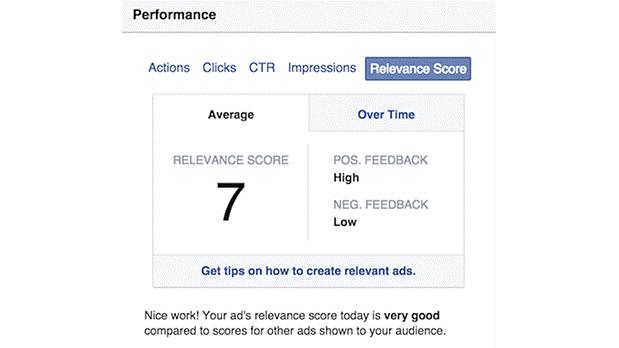
If you chose to work in HR or recruitment because you’re allergic to math and numbers, then you better start rethinking your career plans… Indeed, the most highly sought out skill set in HR today is the ability to analyze data. Recruiters are expected to have a practical knowledge of digital advertising. This means being able to calculate the size of a targeted audience, to craft an employer value proposition in a few punch lines, and to justify every marketing dollar spent with data.
While traditional metrics such as the cost-per-hire (CPH), the time-to-hire (TTH) and the offer-to-hire ratios all remain critically important, recruiters must now master dozens of other metrics and acronyms to be at the top of the game. I’ve compiled a non-exhaustive list of metrics below to help any recruiter who feels a little left behind and is compelled to embark on a more data-centric journey.
RECRUITMENT MARKETING METRICS
Digital channels offer a massive advantage over traditional media in that you can very precisely measure the engagement of your viewers. There are dozens of such metrics, each of which can be optimized to help you build more effective campaigns, and a stronger brand. As attention spans are shortening, these engagement metrics are a critical measuring stick to check if your communications are adapting quickly enough to our fast-paced world. Whether it’s your Facebook careers page, a job ad on LinkedIn, a post on Twitter, or your company website — different engagement metrics may apply, but here are some important ones:
- Click-through Rate (CTR): Measures how targeted your ads are, and how good the messaging is. You may feel that you’ve crafted the perfect job description, but if the call to action in the ad is not laid out very clearly, there is probably a lot of room for improvement.
- Click / Comments / Shares per views: Measure how engaging your ad content is, and how viral it is. Once you have mastered the art of viral, your recruitment marketing dollars will fetch a lot more.
- Cost per hire per channel: This allows you to measure the effectiveness of each advertising channel or, ideally, every single campaign against the number of hires. If a candidate comes up in multiple channels (e.g. Facebook and your career page), then you should be able to pinpoint which channel he used first and attribute the channel accordingly.
- Candidates per hire: While quantity doesn’t equate with quality, we live in an age when you can process a high volume of candidates with minimal resources (see productivity ideas below).
- Talent pipeline growth: Is you strategy enabling you to work with a bigger talent pool every month? In the age of social media advertising, it should be.
Facebook also produces a very helpful Relevance Score, based on the feedback they receive from users (do they want to hide the ad or see the ad?)

For each recruitment campaign, you should take the time to collect and analyze the engagement metrics separately: different job roles may require and attract a different type of candidates.
CANDIDATE EXPERIENCE METRICS
In the age of viral content, candidate experience matters more than ever. It’s incredibly easy to lose applicants due to a slow or a poor process. Seemingly small details like interviewers who don’t know the candidate’s name, or postponing the interview last minute, can mean the end of your relationship. A great way to measure candidate satisfaction is through a simple survey asking them to rate their satisfaction with your recruitment process. You can use (one of) the following metrics to keep track of it:
- Application completion rate (applicable to career sites, Facebook pages, or any other digital assets): This is probably where you get the best return on your efforts. It is the measure of the number of completed job applications you receive per 100 visitors. As a rule of thumb, for every additional click or step you add, expect a lower conversion rate. Keep in mind that with shortening attention spans, people are asked to do more with less time…. Asking candidates to invest 10 minutes of their time before you’ve had any interaction with them could throw them off.
- Net Promoter Score (NPS): Measures how likely a candidate is to recommend your company to another candidate. This data has to be captured in the form of a survey which can be administered online at the end of the application cycle, either on the phone or via web. You can create the NPS by asking just one question, so it is not a big ask of candidates, and can help you measure your progress in building an attractive company.
- Average Response Time: This measures the time it takes for your team to respond to an incoming inquiry from candidates. This metric is highly correlated with overall candidate satisfaction. It is automatically measured for Facebook pages but you should also measure it for your career site or other channels.
- Average recruitment cycle duration: This measures the average time from when the candidate applies to the end of his or her recruitment cycle (regardless of outcome).
- Views per user per month: Measures how often candidates come back to your career site. A high number indicates your ability to tell a powerful story and build rapport.
PRODUCTIVITY METRICS
Metrics are also a great way to measure how effective you are at maximizing your own internal resources. A very large part of the total talent acquisition budget is usually spent on recruiters’ salaries and on recruitment facilities. It is your responsibility to ensure that those resources are fully utilized, and not spent on unqualified candidates or doing low-value work. Here are some metrics that can support this high-productivity goal:
- % of candidates automatically screened: Why go through the burden of screening thousands of resumes or going through hundreds of phone screening assessments if a machine can reliably do that for you? The data you capture via automated screening should help you eliminate a majority of candidates in a faster, cost-effective, and fact-based way.
- % of shortlisted candidates automatically scheduled for an interview: Recruiters used to spend an insane amount of time just scheduling interviews. A lot of that can be automated. There are a number of calendaring solutions you can use. Our company is also offering the use of chatbots to automate that back and forth and get almost 100% of your interviews scheduled automatically.
- (Live) Interview to Hire ratio: The more live interviews (either face to face or over the phone) you conduct per candidate hired, the less effective your use of recruiter time. This is a poor use of time for both the recruiter and the candidate, which generating underperformance in the former and spite in the latter. Obviously, this metric does not apply to asynchronous interviews like the ones handled by one-way video interview or via chatbot. In fact, those are the perfect counter-measure if your interview to hire ratio is too high.
Don’t assume that the success of one recruitment campaign will be replicated for a different job opening or a different location. Don’t assume your candidates are happy with your brand new ATS. In fact, don’t assume anything. The beauty of metrics is they’ll let you swap your assumptions for facts.
About me: I’m the CEO of Talkpush (www.talkpush.com), the leading enterprise recruitment software for volume hiring. Our chatbot currently interviews over 15,000 candidates a month, which leads to close to 1,000 hires a month. Are you ready to start engaging with talent at scale? Send me a message or write to us on Facebook .
Avid reader? Read on with 10 things recruiters can do while the bots are doing “all the work”.


